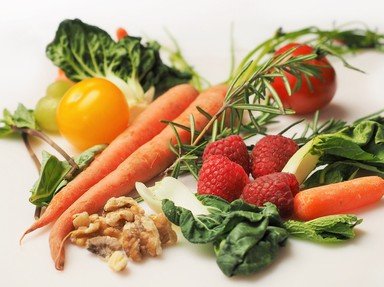Quiz Answer Key and Fun Facts
1. This is a pale yellow solid which dissolves in fats and oils, but NOT in water. It is only found in animal foods, but many fruit and vegetables contain carotenes which can be converted into this vitamin in the body. A lack of this vitamin can cause impaired vision in reduced light.
2. This is a white, crystalline substance which is very soluble in water. It is found in fresh fruits and vegetables but NOT in cereals. It has antioxidant properties.
3. Together with calcium, this is an essential constituent of bones and teeth. It is present in all living cells where it is involved in the release of energy. As it is found in most foods, dietary deficiency has never been recorded.
4. This is found in green vegetables and a variety of other foods. Deficiency is rarely seen because it is also synthesized by bacteria present in the intestine. It is essential for the normal clotting of blood, and is now given routinely to newborn babies in the UK.
5. This is found in many foods but wheat germ, vegetable oils, nuts, margarine and egg yolk are particularly good sources. It is a natural antioxidant and is often found in skin moisturisers.
6. This is necessary for the formation and development of bones and teeth, and is also needed for the normal functioning of muscles and nerves in the body. It is found in milk, cheese and other dairy products and in fish such as sardines and tuna, where the bones are eaten.
7. This is a white solid which is soluble in water. It is found in all grain cereals and in particular the germ and bran of the grain. Other sources include meat, potatoes and brewers' yeast. It plays an important part in the oxidation of nutrients and the release of energy in the body.
8. Liver and kidney are excellent sources of this nutrient, or peas and spinach for non meat eaters. It is essential in the production of red blood cells, and a deficiency causes anaemia.
9. This can be found in relatively few foods compared with most vitamins and minerals but sources include oily fish, eggs, butter and.... sunlight! It is required for the absorption of calcium from the intestine and the uptake of calcium and phosphorus by the bones and teeth.
10. This is mainly eaten in the form of common salt. Most natural foods contain little amounts, but considerable amounts are added when preserving and processing foods. It is lost from the body through sweat. Too much loss can cause muscular cramps.
Source: Author
lulublue24
This quiz was reviewed by FunTrivia editor
crisw before going online.
Any errors found in FunTrivia content are routinely corrected through our feedback system.


